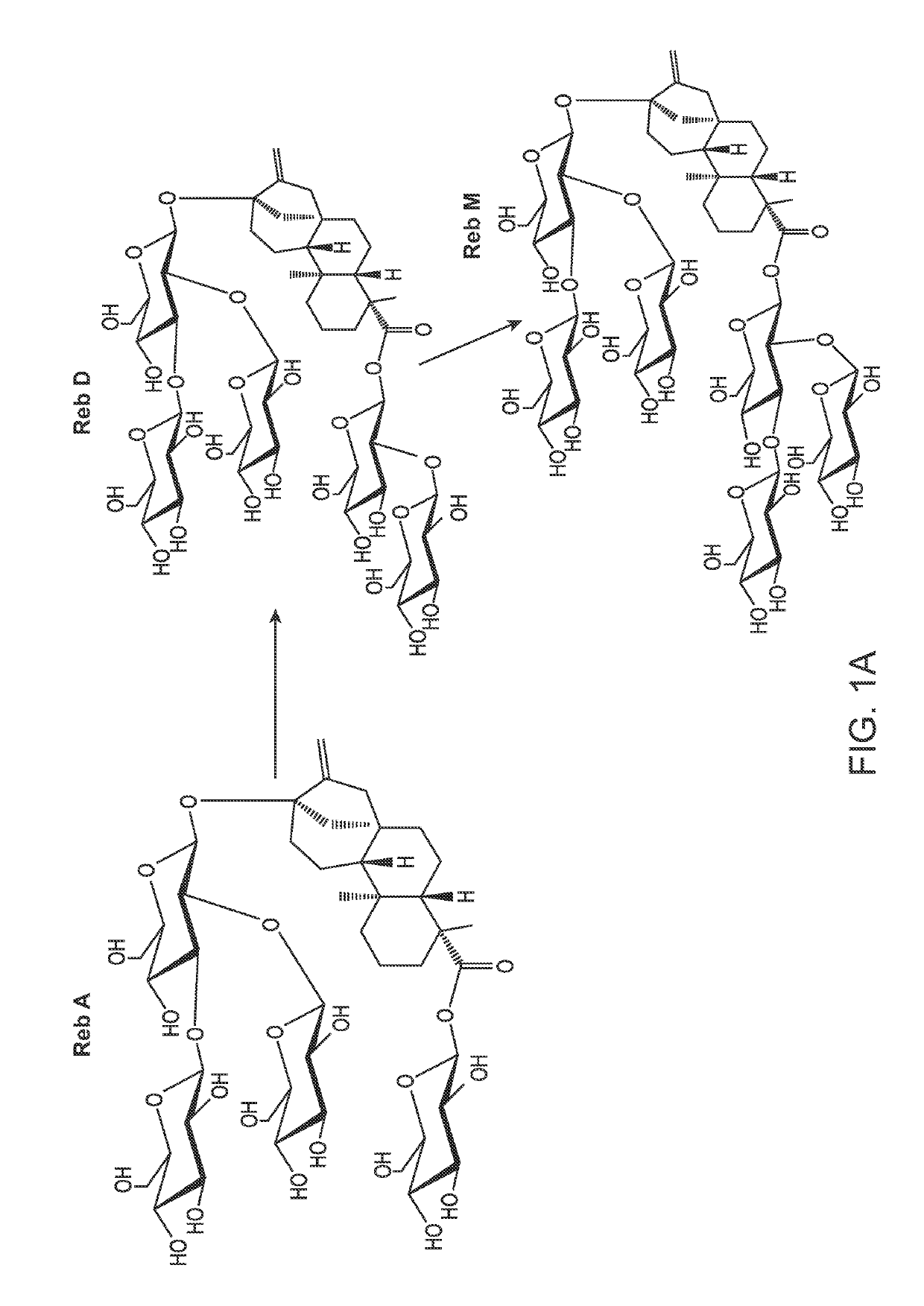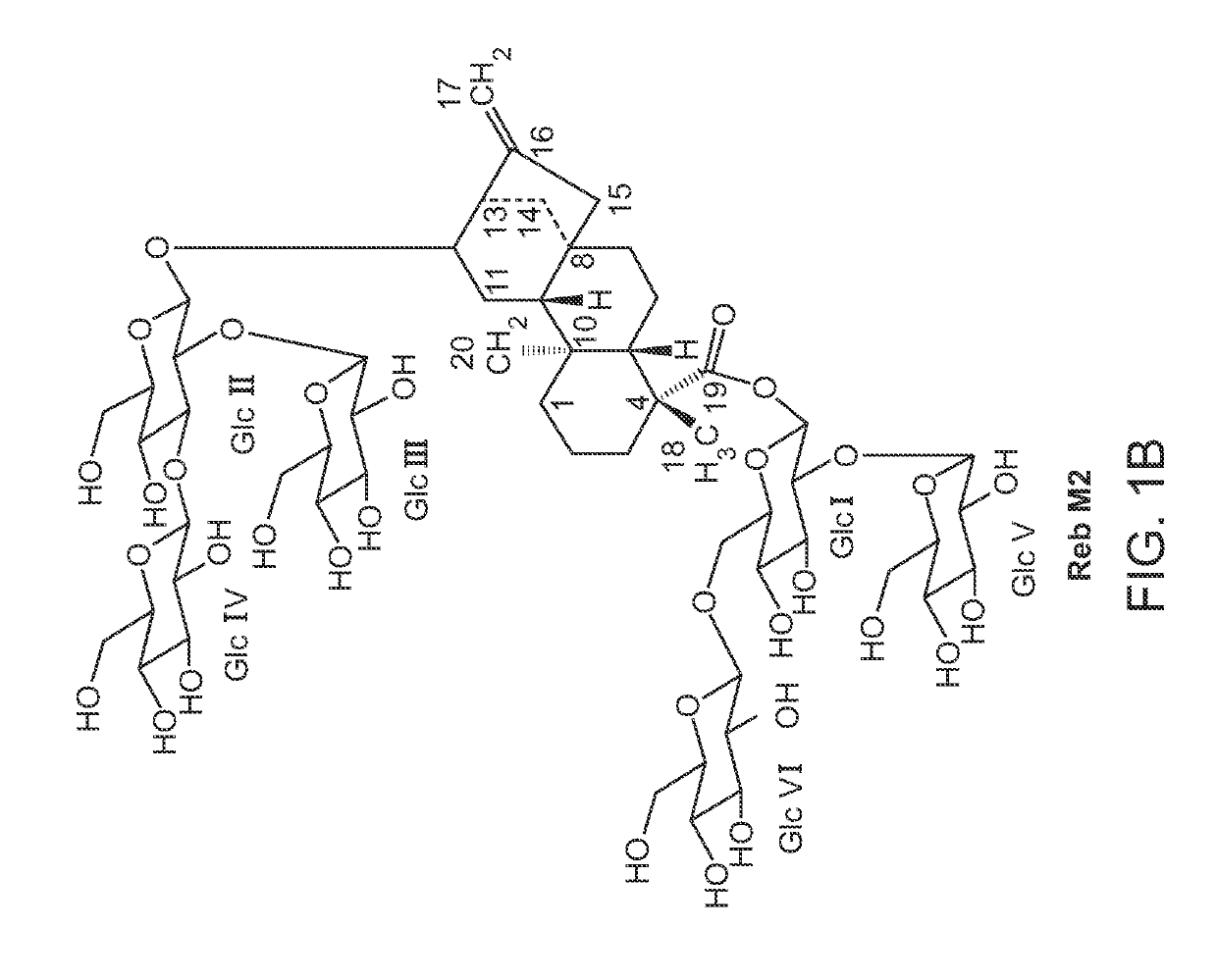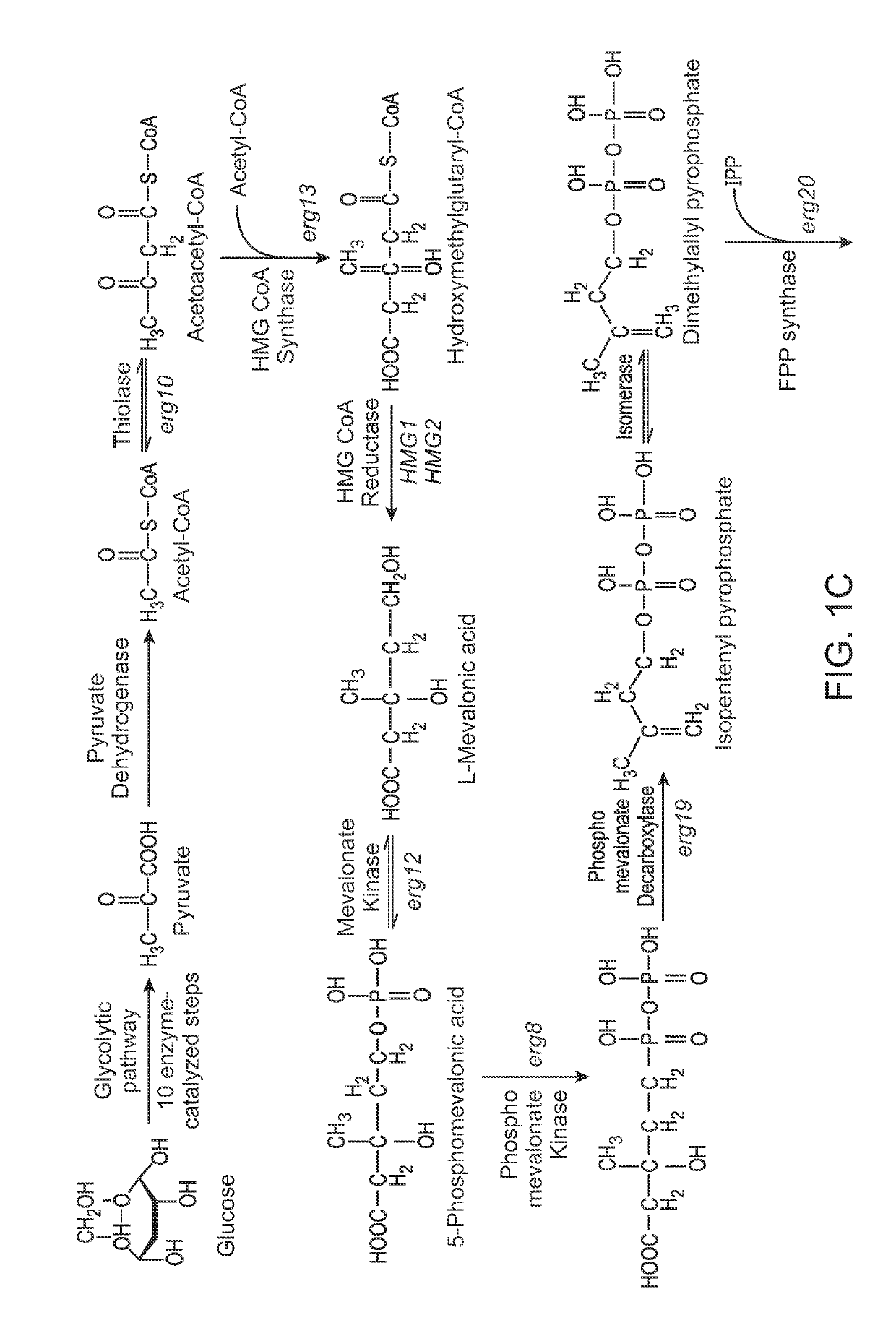Udp-dependent glycosyltransferase for high efficiency production of rebaudiosides
- Summary
- Abstract
- Description
- Claims
- Application Information
AI Technical Summary
Benefits of technology
Problems solved by technology
Method used
Image
Examples
example 1
n of a Base Yeast Strain Capable of High Flux to Farnesylpyrophosphate (FPP) and the Isoprenoid Farnesene
[0233]A farnesene production strain was created from a wild-type Saccharomyces cerevisiae strain (CEN.PK2) by expressing the genes of the mevalonate pathway (FIG. 1C) under the control of GAL1 or GAL10 promoters. This strain comprised the following chromosomally integrated mevalonate pathway genes from S. cerevisiae: acetyl-CoA thiolase, HMG-CoA synthase, HMG-CoA reductase, mevalonate kinase, phosphomevalonate kinase, mevalonate pyrophosphate decarboxylase, and IPP:DMAPP isomerase. All genes described herein were codon optimized using publicly available or other suitable algorithms. In addition, the strain contained six copies of farnesene synthase from Artemisinin annua, also under the control of either GAL1 or GAL10 promoters. The strain also contained a deletion of the GAL80 gene and an additional copy of GAL4 under GAL4oc promoter, wherein the coding sequence of the GAL4 gene...
example 2
n of a Base Yeast Strain Capable of High Flux to RebA
[0234]FIG. 2A shows an exemplary biosynthetic pathway from FPP to the steviol. FIG. 2B shows an exemplary biosynthetic pathway from steviol to glycoside RebM. To convert the farnesene base strain described above to have high flux to the C-20 isoprenoid kaurene, six copies of a geranylgeranylpyrophosphate synthase (GGPPS) were integrated into the genome, followed by four copies each of a copalyldiphosphate synthase and kaurene synthase. At this point the six copies of farnesene synthase were removed from the strain. Once the new strain was confirmed to make ent-kaurene, the remaining genes for converting ent-kaurene to RebA were inserted into the genome. Table 4 lists all genes and promoters used to convert FPP to RebA. Each gene after kaurene synthase was integrated with a single copy, except for the Sr.KAH enzyme which had two copies (Table 4). The strain containing all genes described in Table 1 primarily produced RebA. The enzy...
example 3
n of a Strain to Screen Novel UDP-Glycosyltransferase (UGT) Enzymes to Convert RebA to RebD
[0235]To make a screening strain to rapidly screen for RebA to RebD conversion in vivo, a landing pad was inserted into the RebA strain described above. The landing pad consisted of 500 bp of locus-targeting DNA sequences on either end of the construct to the genomic region downstream of the ALG1 open reading frame (FIG. 4). Internally, the landing pad contained a PGAL1 promoter and a yeast terminator flanking an endonuclease recognition site (F-CphI).
PUM
| Property | Measurement | Unit |
|---|---|---|
| Fraction | aaaaa | aaaaa |
| Fraction | aaaaa | aaaaa |
| Fraction | aaaaa | aaaaa |
Abstract
Description
Claims
Application Information
 Login to View More
Login to View More - R&D Engineer
- R&D Manager
- IP Professional
- Industry Leading Data Capabilities
- Powerful AI technology
- Patent DNA Extraction
Browse by: Latest US Patents, China's latest patents, Technical Efficacy Thesaurus, Application Domain, Technology Topic, Popular Technical Reports.
© 2024 PatSnap. All rights reserved.Legal|Privacy policy|Modern Slavery Act Transparency Statement|Sitemap|About US| Contact US: help@patsnap.com










